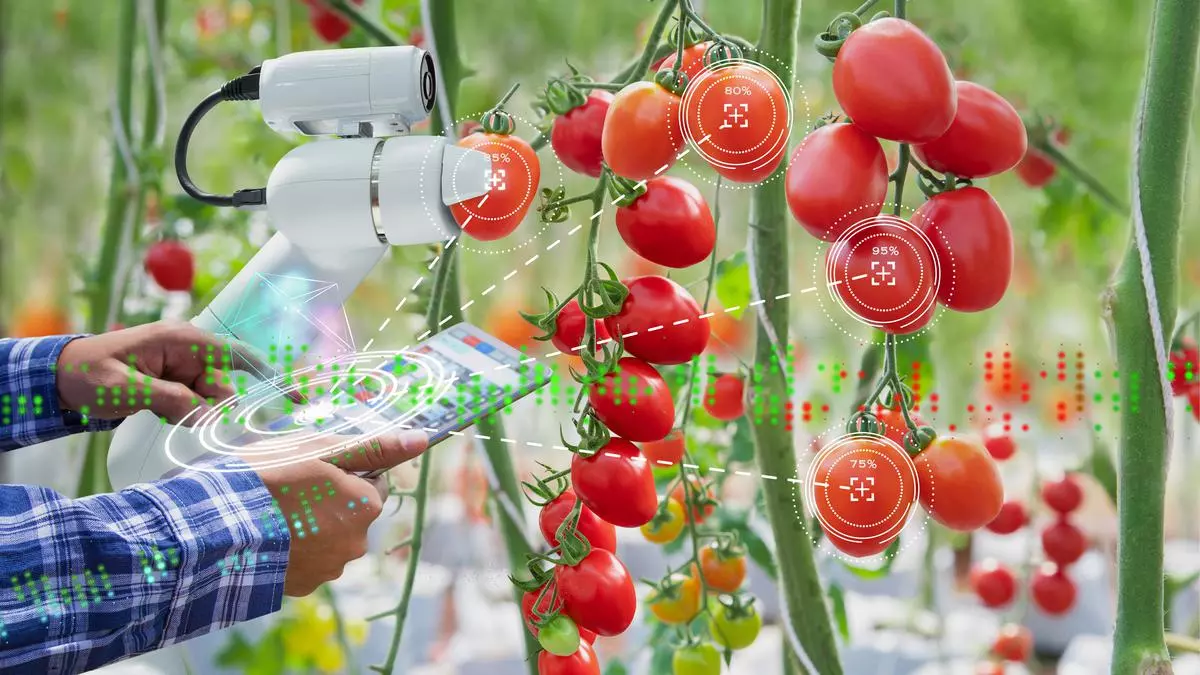How climate monitoring, weather forecasting tools aid in enhancing precision agriculture
Agriculture and its allied sectors have been the backbone of the economy worldwide. In recent years, with increased food demands and a favourable trade environment, the market has been undergoing constant evolution. There is an upsurge in the investments, especially in the start-ups embedding innovative technologies in conventional agriculture methods. Having said that, the sector is plagued by complexities posed by current climate changes.
Being heavily dependent on natural conditions, agriculture is the first industry to feel the impact. In 2022, the global agriculture market recorded a 9.4 per cent CAGR and was valued at $13 billion at the beginning of 2023. Additionally, there is a steep rise in global inflation, leading to an increase in food prices by 8.75 per cent in 2022 alone, paired with climatic changes that demand effective agricultural practices.
Emergence of precision agriculture
The accelerated adoption of technology in the agriculture sector has given rise to the emergence of precision and smart agriculture. Subsequently, it has helped farmers maximise their yields while also utilising their resources with high efficacy. Apart from this, the major impact that the agriculture industry is making with the use of technology is the less environmental damage. With data-driven practices and processes, farmers are enabled for crop production optimisation that directly contributes to planet sustainability.
Precision agriculture applies technology and data-driven practices to optimise crop production. In a digitally driven landscape, farmers are pivoting from using traditional and conventional farming methods to resource and crop optimisation such as leveraging the use of GPS mapping, soil sensors, and drones. The insights gathered from these tools help farmers analyse crop growing conditions. Ultimately, this reduces the need for resources such as seeds, water, and chemicals, contributing to environmental sustainability.
AI-powered monitoring and agriculture
With AI penetrating deep within every industry, the world of agriculture no longer remains an exception. Against the backdrop of climatic disruptions, the potential of AI remains paramount, as it allows accurate prediction of weather discrepancies which enables farmers to choose the right plant and planting schedule. Distinguished by its ability to analyse chunks of data within minutes, AI provides timely insights to farmers and policymakers pertaining to weather, soil, and vegetation indices, leading to informed decisions.
The avenues of AI-powered agriculture are multitude, but the role played by AI in monitoring cannot be overstated, as it equips farmers with relevant information, reducing the risks and maximising productivity. Nevertheless, AI-powered monitoring in agriculture enables farmers to align their current practices with sustainable methodologies, including afforestation and conservation of resources, charting a path towards a better tomorrow.
Big data in precision farming
The agriculture industry has always been vulnerable to an array of risks, from severe weather conditions and pest outbreaks to market volatilities. Having said that, the ascent of a data-driven approach has empowered farmers across the globe to pivot these risks effectively. By leveraging data analytics, farmers can apprise weather patterns, making room for precise weather forecasts, both short and long-term alike. Additionally, with the integration of historical weather data, real-time updates, and crop growth models, farmers can project upcoming weather-related concerns to take preventive measures accordingly.
Having employed a series of preventive measures, including planting schedule adjustments, protective processes, and crop insurance, big data has also been instrumental in bolstering sustainable agriculture. Augmenting precision-oriented agriculture tactics, big data has opened doors to optimisation of resources, reduction of chemical inputs, and mitigation of environmental damage. On one hand, analysing energy usage patterns enables farmers to adopt energy-saving measures, on the other data-driven water management accelerates water conservation, contributing to sustainable farm operations all across.
IoT and smart sensors for real-time tracking
Amid the impending food crisis, IoT-based precision farming has emerged as a viable solution. By making use of GPS, smart sensors, aerial devices, and field mapping, IoT allows for streamlined crop management, increased production levels, and enhanced profitability. With IoT devices, namely drones and automated machinery, farmers can accurately monitor field conditions and gain crucial insights into the state of crops and soil, which in return enables them to apply inputs where necessary and reduce waste.
Leaving no stone unturned, within the peripherals of precision agriculture, smart sensors installed on the fields are characterised by their ability to instantly send data regarding crop status, weather conditions, and soil quality, delivering farmers with an improved understanding of the overall farm process. Specialising in real-time tracking of weather patterns and trends, IoT devices are the ultimate game-changer for natural disaster management.
Final Thoughts
As we peek further into the future, the role of technology as the key accelerator in driving climate-smart agriculture is poised to escalate beyond. Rooted within the very ethos of transforming this niche from its intricacies, technology-led agriculture is carving an indelible mark on the industry, paving the way for mitigating risks-driven precision-oriented landscape. Having said that, the industry, still in its nascent stage, requires continued investments from both public and private players in order to make technologies more accessible and resonant with diverse farming contexts.
The author is Practice Head of Agritech, [x]cube LABS.
